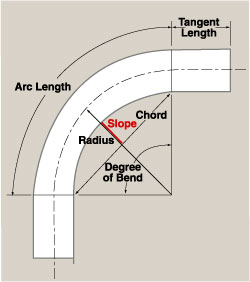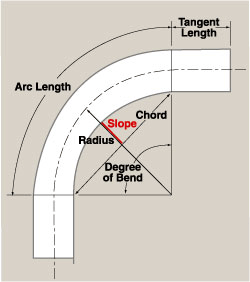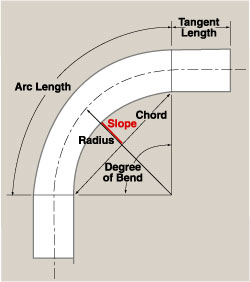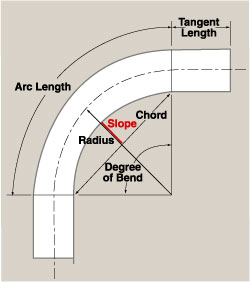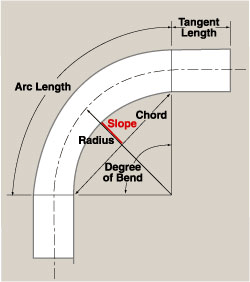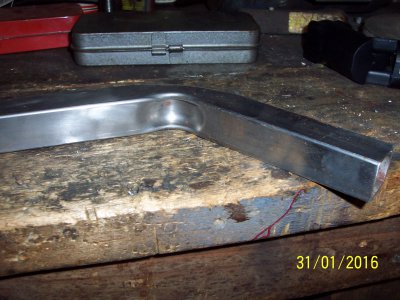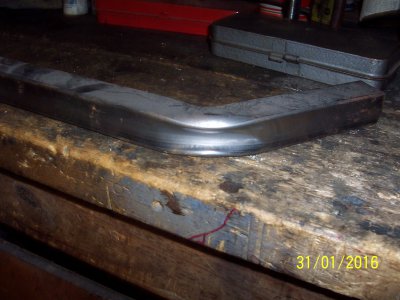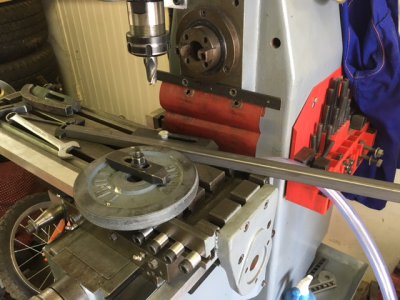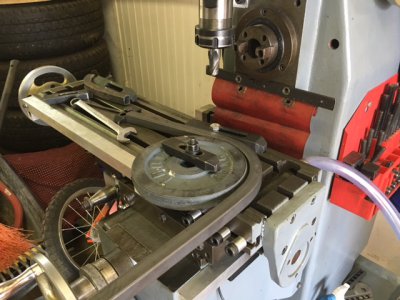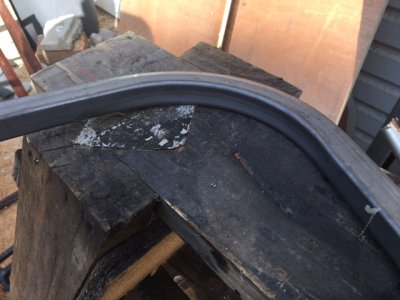Here is some info on bending. I have a JD bender that does round & square. I use it mostly for roll cages. Mike
 Bending square and rectangular tubing
Modern science or ancient art?
TPJ - THE TUBE & PIPE JOURNAL® APRIL/MAY 2002
Bending square and rectangular tubing
Modern science or ancient art?
TPJ - THE TUBE & PIPE JOURNAL® APRIL/MAY 2002
May 16, 2002
By:
Bill Smith,
Mark King
This article discusses some of the similarities and differences between bending round tube versus square and rectangular tube. Explores the characteristics of square and rectangular sections and the bending challenges associated with these characteristics.
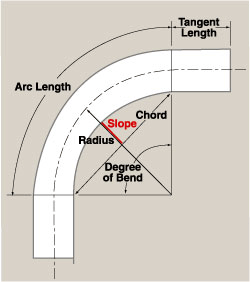
The process of bending tubing is based largely on modern science and technology. Bending dies are designed with computer software, bending machines are computer-controlled, and the stresses and strains can be predicted accurately with mathematics.
However, the principles aren't based solely on modern gadgets and sophisticated mathematics. The underlying concepts of bending tubing are the same as those used by blacksmiths for centuries, developed long before the slide rule, the calculator, or the desktop computer.
While the procedures are the same for bending round, rectangular, and square material, square and rectangular tube require special consideration.
Similarities Between Bending Round and Rectangular Tubing
The basics of bending are the same for all material in that certain information is required to produce an accurate part (see
Figure 1):
- Degree of bend
- Radius of the bent section
- Chord of the bent section
- Arc length
- Slope of the bent section
- Tangent lengths
It isn't necessary to know all six parameters. However, at least three must be known to produce a bent section.
After the information is collected and analyzed, the appropriate method of bending is chosen. Bending methods are the same for round, square, and rectangular material:
- Rotary draw bending
- Induction bending
- Roll bending
- Increment bending
- Compression bending
As with all bent parts, the customer's tolerances and appearance requirements help determine the proper method.
Getting the Material to Cooperate
All the available modern tools—sophisticated mathematical formulas, computer-generated programs, and CNC bending machines—may not create the desired product. This is because the workpiece being formed does not know what the tools are telling it to do.
The workpiece has a mind of its own, and the operator must be the liaison between the tools and the workpiece to overcome what the material doesn't "understand." This is especially true of square and rectangular materials that generate unique problems that usually require blacksmithing knowledge to correct.
The challenges associated with square and rectangular material include its physical dimensions and characteristics.

Figure 2 Although bending the hard way (left) requires more force, it results in less distortion than the easy way (right).
Square Versus Round Corners. Corner radii determine whether a mandrel will fit properly to the inside diameter (ID) of the tube. In some cases, workpieces with rounded corners tend to roll in the direction opposite of the bend radii, causing the material to twist.
Location of the Weld Seam. The ideal position of the weld seam is in the center of one of the four sides. The closer the weld seam is to the radiused corner, the greater the chance for improper mandrel fit and cracking of the weld seam. When possible, the weld seam should be placed on a neutral axis of the bent section.
Shop-fabricated Versus Mill-produced Materials. Shop-fabricated material may be bent in the same manner as mill-produced material. However, when shop-fabricated square or rectangular material is formed, the corner edges become work-hardened. This can cause bending difficulty or cracking at the corner.
Hard Way Versus Easy Way. When rectangular tubing is bent, the material often has less distortion if it is bent the hard way (see
Figure 2). For bending the easy way, the greater the difference between the sides of the tubing (for example, a 16-by 4-inch section has a greater difference than a 12- by 4-in. section), the greater the distortion or concavity on the ID of the bend. Concavity is less of a problem on thicker-walled materials.
Size of Material, Wall Thickness, and Radius of Bend. The heavier the wall thickness, the tighter it may be formed with minimal distortion. Forming an 8- by 8-in. steel tube to a 5-ft. radius results in more distortion if the wall thickness is 0.188 in. than if the wall is 0.500 in. Design parameters and the required appearance of the final product often assist in making thickness choices.
Architecturally Exposed or Enclosed Materials. Architecturally exposed section (AES) material takes greater analysis of bending radius, wall thickness, and bending method. Also, if minimal distortion is allowed in the bent section, the operator must give more consideration to proper bend procedures.
Factors That Influence the Bending Process
Several tips can help to ease bending square or rectangular material and reduce the amount of distortion in bent sections.
Wall Thickness. Bending round, square, or rectangular material involves stretching the outside diameter (OD) of the bend and compressing its ID. Consequently, a heavier wall thickness allows for a tighter bend radius and more material stretchability with less distortion.
Method of Bending. This is a key factor in controlling distortion. A correctly chosen procedure can help to produce consistent tolerances and accurate parts. Generally, smaller material requires rotary draw bending or compression bending, which can incorporate wiper dies and mandrels. Induction and increment bending should be used with larger material bent to a larger radius. Design distortion and material size are important factors for determining the bending method.
In many cases, there is no better factor than experience. Many trained bending artisans know what is required to produce an acceptable product.
Size of Material. Larger material bent to a smaller radius has a greater chance to distort than smaller material bent to a larger radius. Design and planning are necessary to help solve bending problems before they arise.
Tooling. After the parts have been designed, the method of bending has been chosen, and procedures to bend to proper tolerances are established, the machine must be set up with the proper tooling. Based on design conditions, tooling that can be used includes bend die, clamp block, follower block, mandrel, and wiper die. All or some of this tooling may be required.
Internal and External Lubricant. Lubricants decrease the friction between tooling and material to be bent. When friction is reduced, material flows smoothly through the bending equipment, allowing the machinery to perform its designed operation efficiently.
Modern Science and Ancient Art
The art of bending comprises all of the activities that come before the machine is turned on. The roots of that art go back to a time when tongs, hammers, and anvils were the tools of the trade. The moment the bender is turned on, the process takes on the knowledge and technology of modern times—blacksmiths' accumulated experience is augmented with calculus and differential equations, and muscle power is replaced by hydraulics and electricity.
Modern projects use both the knowledge of the past and tools of the present to produce usable parts. Combining past and present procedures makes bending a true art form and produces parts that make fabrication and construction projects easier and more profitable.

